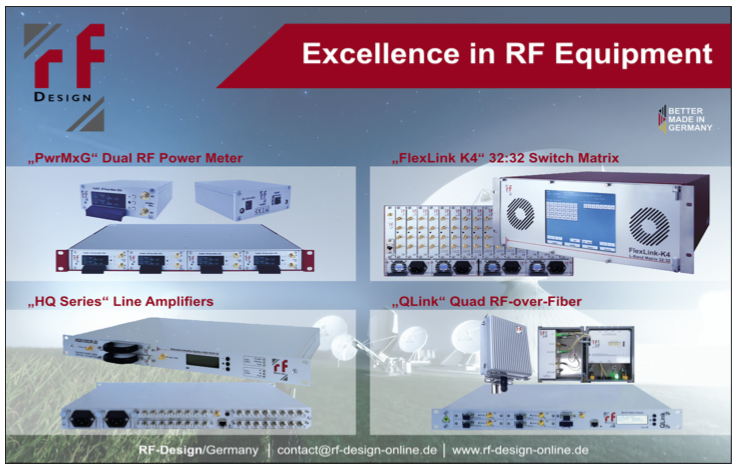Intuitive Machines’ Moon Missions Will be Supported By Goonhilly

Intuitive Machines’ Moon Missions Will be Supported By Goonhilly Intuitive Machines (IM) has entered a long-term agreement with Goonhilly Earth Station Ltd. to support every stage of IM’s missions to the Moon, from launch and early operations, through transit, and including lunar operations — the company will use Goonhilly’s services for its 2022 IM-1 mission to the Moon as well as future missions.
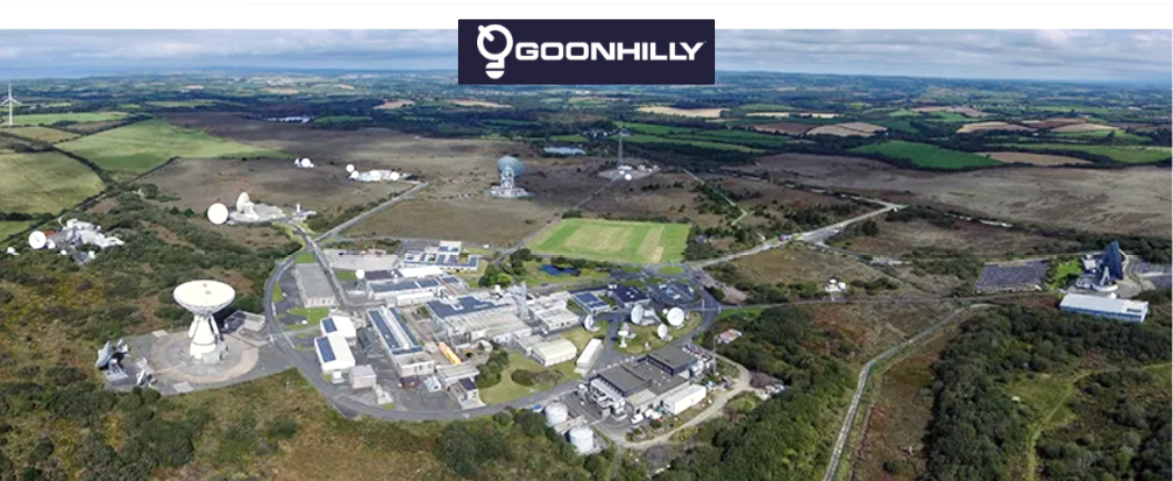
Goonhilly Earth Station Ltd. will be providing access to their newly upgraded deep space antenna GHY-6 to facilitate communications between the Intuitive Machines lunar mission and the ground. GHY-6 is a former satellite communications antenna that has been given a new life supporting deep space missions for ESA, NASA, and commercial endeavors, serving as the world’s first private deep space communications asset. Qualification and testing of the refurbished ground station has been underway for many months, and the Intuitive Machines mission will be amongst the first spacecraft to be supported by GHY-6.
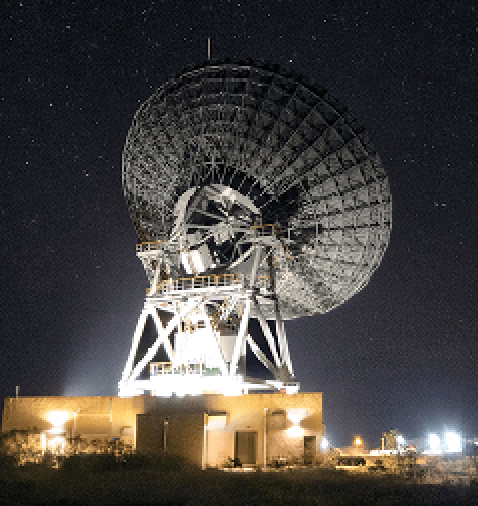
Goonhilly’s GHY-6 32m X/S-band
communication antenna.
IM’s LTN includes other large parabolic dishes spread across the globe to provide near continuous spacecraft command, control, and communications at lunar distance. The LTN, along with IM’s control center, Nova Control, is a complete service offering to any commercial or government partners operating in cislunar space.
“The addition of Goonhilly’s GHY-6 deep space antenna adds significant data downlink capability to IM’s robust Lunar Telemetry and Tracking Network (LTN),” said Intuitive Machines’ Vice President of Control Centers, Troy LeBlanc, Ph.D. “Creating the first commercially available lunar distance communication network is a communications challenge and will require the technical support and expertise that the team at Goonhilly is ready to provide for mission tracking and data downlink services.”
“This opportunity is very exciting for Goonhilly and we’re ready to provide services to the rapidly growing commercial space sector,” said Goonhilly CTO, Matt Cosby. “For many years, different organizations have worked on coordination and standardization of mission operations and communications, allowing interoperability and flexibility that will drive down costs and development times for everyone involved.”
Infostellar Integrating AWS Ground Station In Their Mission Control Software
Infostellar Inc. is collaborating with Amazon Web Services, Inc. (AWS) to make AWS Ground Station available within StellarStation. The combination will give satellite operators more opportunities to communicate with their space workloads, downlink geospatial data faster and easier, and decrease the time it takes to get data to decision makers on Earth. Infostellar also plans to leverage AWS for customer integration, testing and other onboarding activities to reduce the time it takes to scale successful operations across a global ground network.

Satellite operators require an increasingly large, global footprint of satellite antennas and expansive ground networks to get decision makers the most recent satellite data and track and manage fast-changing conditions. Larger ground coverage areas also provide satellite operators with more options to downlink their data during each orbit.
The AWS Ground Station network allows customers to cost-effectively control satellite operations, ingest satellite data, integrate the data with applications and other services running in AWS, and scale operations without having to worry about building or managing their own ground infrastructure.
StellarStation gives satellite operators a common interface to leverage ground stations from a variety of providers around the globe so they can schedule satellite passes and monitor and exchange data in a standard manner.
Now, with AWS and Infostellar, is required to scale globally in the cloud because operators do not need to because operators do not need to send engineers to each site around the world. Instead, they can reuse their integration and test efforts across multiple global sites simultaneously.
The combination of AWS Ground Station and StellarStation helps satellite operators to provide customers with near real- time data through an expanded ground coverage area, including an automated ground network with virtual data and mission management capabilities.
Through the API integration of AWS Ground Station on StellarStation, customers will be able to schedule contacts across both ground networks from a single scheduling interface and specify data endpoints in their AWS Management Console or in their own data reception facility.
Using AWS Ground Station, Infostellar customers can immediately access AWS storage, compute, and analytics services, such as Amazon Simple Storage Services (Amazon S3), to store the downloaded data; Amazon Kinesis Data Streams, for managing data ingestion from satellites; and Amazon SageMaker for building custom machine learning applications that can be applied to a wide variety of data sets.

Customer onboarding, including spectrum licensing, will be coordinated between the two ground operators. Among initial customers of AWS Ground Station on StellarStation mission control software could be Japan-based space start-up ALE Co, Ltd.
“Leveraging AWS Ground Station allows Infostellar to expand our infrastructure very rapidly with the addition of key locations to our global network of ground stations. AWS also shows the benefits of our cloud-based ground service aggregation platform, StellarStation, to the global community of spacecraft operators,” said Naomi Kurahara, Infostellar CEO. “With Infostellar and AWS, satellite customers can migrate their workloads to AWS in order to benefit from its agility, cost savings, elasticity, and global connectivity.”
“We are excited to provide AWS Ground Station services through Infostellar. AWS Ground Station makes it easy for customers to communicate with their satellites and quickly move data around the globe, process and store it in the AWS cloud. StellarStation customers can schedule satellite contacts at AWS Ground Station locations around the world and take advantage of Amazon’s low-latency, high-bandwidth global network to deliver data.” said Jim Caggy, General Manager, AWS Ground Station.
“The combination of AWS Ground Station and InfoStellar’s StellarStation mission control software will provide satellite operators with more frequent communication with their satellites. This collaboration will allow us to better schedule shooting star events for the ALE man-made shooting star experience and provide more flexible options for our customers. This combination is very important to us here at ALE; we look forward to it helping us delight customers all over the world,” said Lena Okajima, CEO, ALE Co, Ltd.
Gilmour Space Corrals Million$$ In Series C Private Equity Investments
Gilmour Space Technologies has secured AUD$61 million (approximately $47 million) from global investors in what is the largest private equity investment raised by a space company in Australia.
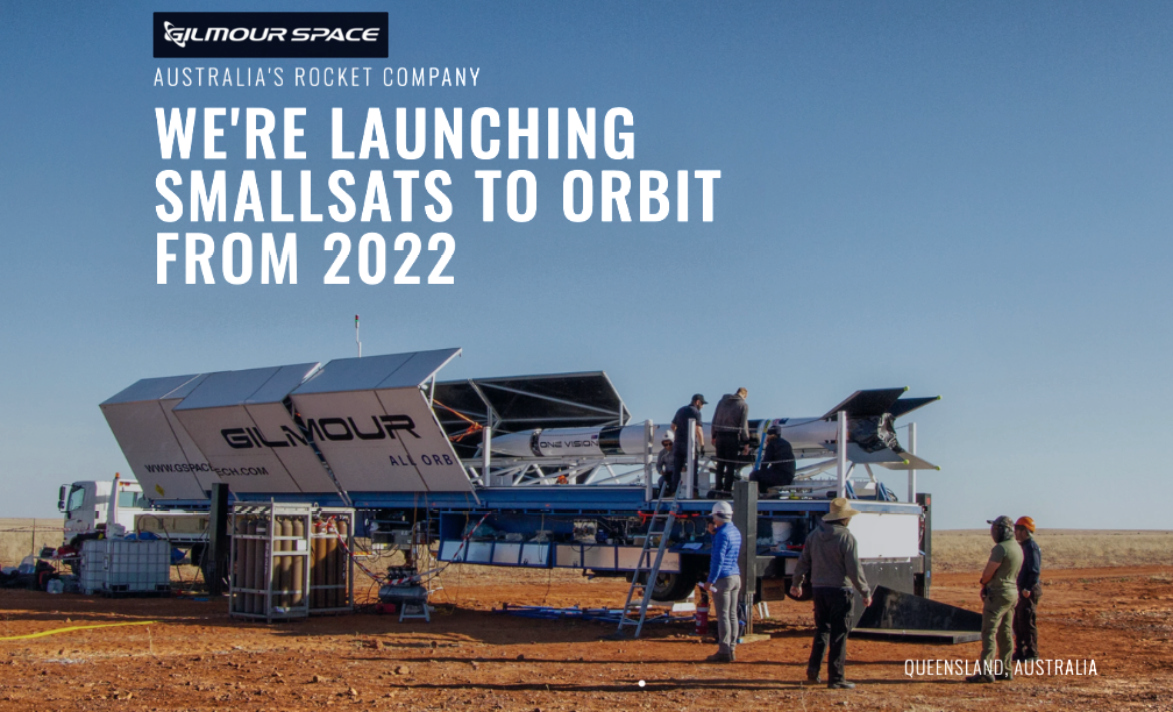
The Series C round, which includes US-based Fine Structure Ventures, Australian venture capital firms Blackbird and Main Sequence, and Australian superannuation funds HESTA, Hostplus, and NGS Super, brings the company’s total funds raised to date to $87 million.
Since launching its first hybrid rocket in mid 2016, Gilmour Space has achieved a series of significant technology milestones to become a leader in orbital-class hybrid propulsion technologies that use safer and lower cost fuels than traditional chemical propulsion rockets. In recent months, the company has also secured launch contracts with Australian and international customers including US-based Momentus, Sydney-based Space Machines Company and South Australia’s Fleet Space Technologies. With more than 70 employees in its Gold Coast, Queensland, rocket facility and a growing network of 300 partners and suppliers, Gilmour Space is defining space manufacturing in Australia.
Brett Rome, lead investor and Managing Partner at Fine Structure Ventures, a venture capital fund affiliated with FMR LLC, the parent company of Fidelity Investments. “The team at Gilmour is building the leading sovereign launch company in Australia, and using their innovative hybrid rocket engine to efficiently address the growing global demand for putting satellites into orbit.”
“It’s fantastic to see the global support for our mission to build and launch lower cost rockets and satellites to orbit,” said Gilmour Space CEO and Co-Founder, Adam Gilmour.
“This new investment will give us runway to launch our first orbital rocket in 2022. It will help us develop multiple Eris vehicles, grow our team from 70 to 120 in the next 12 months, build our sovereign space manufacturing capability for rockets and satellites, and facilitate a commercial spaceport in Queensland, where we hope to launch the world’s first hybrid rocket to space. My brother James and I started the rocket program in 2015 with the goal of one day sending humans to space.
We always knew it would be a difficult journey, but it makes me proud to think that our ambition and progress have contributed to the tremendous growth of Australia’s new space industry. Today, we are growing an amazing team committed to providing affordable and reliable satellites and rocket launches to our global customers.
We’re backed by top investors, and we are proud to be supporting some of the world’s most innovative space companies as they look to create significant and positive outcomes for humanity.”
Rocket Factory Augsburg (RFA) Successfully Tests Full-Scale, Staged-Combustion Engine
Launch service provider Rocket Factory Augsburg (RFA) has announced their successful firing-tests of the company’s full-scale staged combustion engine.

During the 2 second test, which was carried out in Kiruna (Sweden), RFA successfully commissioned the first staged- combustion engine in Western Europe. Staged combustion technology is characterized by higher efficiencies and performances compared to traditional rocket engine designs.
The partially unburnt exhaust gases from the turbopump are fed back to the main combustion chamber, thereby avoiding the release of unburned fuel. The recycling of the exhaust gases significantly increases the overall efficiency of the launch vehicle while reducing launch costs and also minimizing CO2-footprints of the launch activity.
Two planned milestones were already reached at the start of May of this year. In the “power-pack test,” the turbopump and pre-burner were started and operated in a stable, steady-state thermo-mechanical condition for a total burn-time of 8 seconds.
In the next development step, the first ignitions of the main combustion chamber were conducted, after which the test team connected the “power pack” to all systems of the full-scale engine and performed the complete system-level test.
RFA stands-out as the ninth company worldwide to have successfully tested a full-scale rocket engine using staged combustion. Staged combustion is the technological back bone of some of the world’s most successfully space companies and to this point, was limited to the United States, Russia, China, India, Japan and Ukraine.
The US companies SpaceX and Blue Origin were the latest private companies to have developed this sophisticated technology with the “Raptor” full-flow staged combustion engine and “BE-4” staged combustion engine.
“The successful test of our full-scale staged combustion engine reinforces our claim for market leadership,” said Dr. Stefan Brieschenk, the company’s Chief Operating Officer.
“Our technology allows us to carry 30 percent more payload into space at the same cost to the customer,” added Jörn Spurmann, RFA’s Chief Commercial Officer.
Microchip Boosts Their GaN RF Portfolio
Satellite communication systems use complex modulation schemes to achieve the blazingly fast data rates required to deliver video and broadband data.
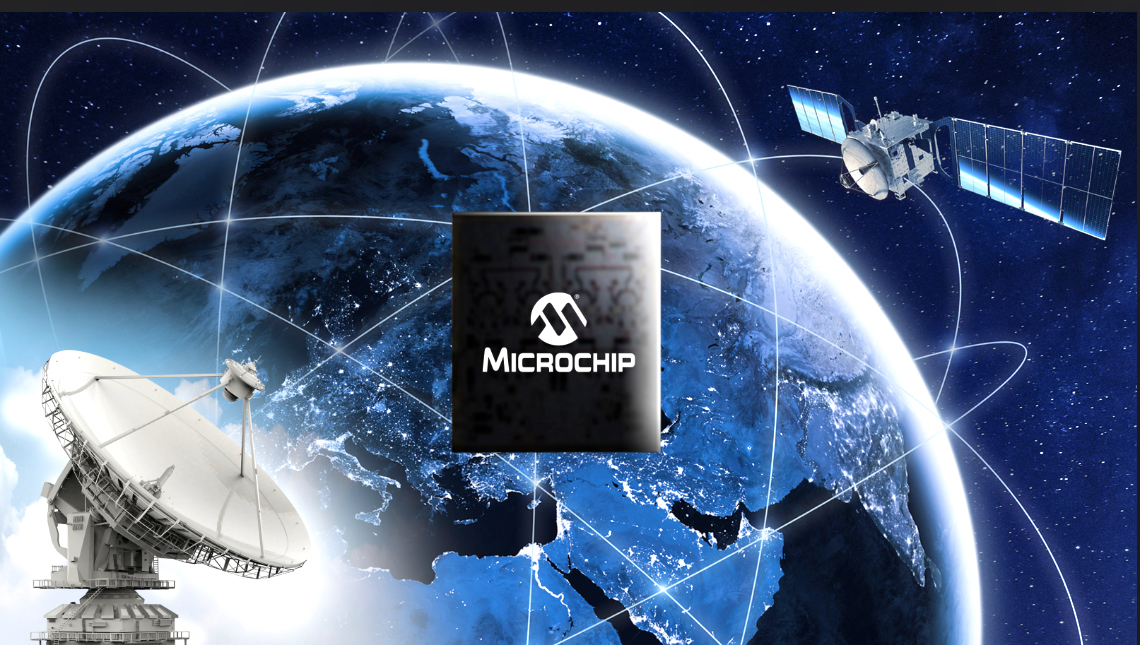
To attain this, they must deliver high RF output power while simultaneously ensuring the signals retain their desired characteristics.
The new GMICP2731-10 GaN MMIC power amplifier announced by Microchip Technology Inc. (Nasdaq: MCHP) helps meet both of these requirements. This new chip is designed for use in commercial and defense SATCOM, 5G networks and other aerospace and defense systems.
The GMICP2731-10 is fabricated using GaN-on-Silicon Carbide (SiC) technology and delivers up to 10W of saturated RF output power across the 3.5 GHz of bandwidth between 27.5 to 31 GHz. The chip’s power-added efficiency is 20 percent, with 22 dB of small-signal gain and 15 dB of return loss.
small-signal gain and 15 dB of return loss.
A balanced architecture allows the GMICP2731-10 to be well matched to 50-ohms and includes integrated DC blocking capacitors at the output to simplify design integration.
“As communication systems employ complex modulation schemes such as 128-QAM and as the power of solid-state power amplifiers (SSPAs) trends ever upwards, RF power amplifier designers have the difficult challenge of finding higher power solutions while at the same time reducing weight and power consumption,” said Leon Gross, vice president of Microchip’s Discrete Products Group business unit. “GaN MMICs used in high power SSPAs can achieve greater than 30 percent lower power and weight as compared to their GaAs counterparts, which is a huge gain for satellite OEMS. This product delivers on the promise of GaN and enables the size, weight, power (SWaP) and cost OEMs are searching for.”
Microchip’s GMICP2731-10 complements the company’s existing portfolio of GaAs MMIC RF power amplifiers, switches, low-noise amplifiers, and Wi-Fi front-end modules, as well as a GaN-on- SiC High Electron Mobility Transistor (HEMT) driver and final amplifier transistors for radar systems.
Microchip provides board design support to help with design-ins, as does the company’s distribution partners. The company also provides compact models for the GMICP2731-10, which allow customers to model the performance and expedite the design of the power amplifier in their systems more easily.
the power amplifier in their systems more easily. A balanced architecture allows the GMICP2731-10 to be well matched to 50-ohms and includes integrated DC blocking capacitors at the output to simplify design integration.
“As communication systems employ complex modulation schemes such as 128-QAM and as the power of solid-state power amplifiers (SSPAs) trends ever upwards, RF power amplifier designers have the difficult challenge of finding higher power solutions while at the same time reducing weight and power consumption,” said Leon Gross, vice president of Microchip’s Discrete Products Group business unit. “GaN MMICs used in high power SSPAs can achieve greater than 30 percent lower power and weight as compared to their GaAs counterparts, which is a huge gain for satellite OEMS. This product delivers on the promise of GaN and enables the size, weight, power (SWaP) and cost OEMs are searching for.”
Microchip’s GMICP2731-10 complements the company’s existing portfolio of GaAs MMIC RF power amplifiers, switches, low-noise amplifiers, and Wi-Fi front-end modules, as well as a GaN-on- SiC High Electron Mobility Transistor (HEMT) driver and final amplifier transistors for radar systems.
Microchip provides board design support to help with design-ins, as does the company’s distribution partners. The company also provides compact models for the GMICP2731-10, which allow customers to model the performance and expedite the design of the power amplifier in their systems more easily.



